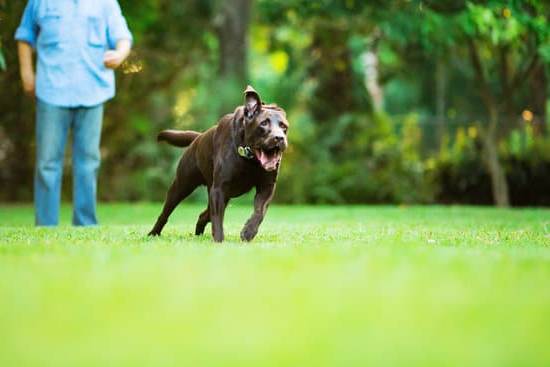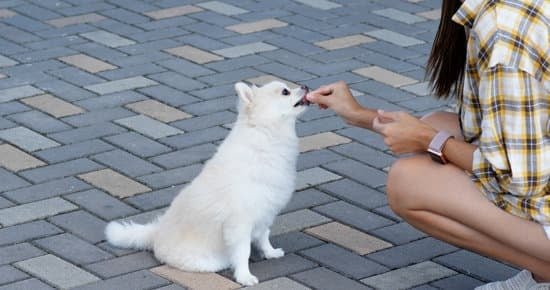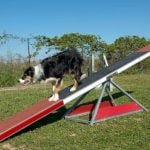Training your dog to stay in your yard is an essential task for any responsible pet owner. Keeping your dog within the boundaries of your property not only ensures their safety but also protects the well-being and peace of mind of both you and your neighbors. In this article, we will explore effective techniques and strategies to train your dog to stay in your yard, ensuring a happy and harmonious environment for everyone involved.
The first step in training your dog to stay within your yard is understanding why it’s important. Dogs have natural instincts to explore and roam, and without proper boundaries, they may wander off into dangerous situations or cause disturbances in the neighborhood. By teaching them to stay within the confines of your property, you are providing them with a safe space where they can play and exercise while giving yourself peace of mind knowing that they are secure.
Before diving into the training process, it’s crucial to assess your yard thoroughly. This includes identifying potential escape routes such as gaps in existing fences or areas where your dog may dig under or jump over. Understanding these boundaries will help you develop a comprehensive plan that addresses specific challenges unique to your yard. Additionally, evaluating the safety hazards present in the environment allows you to take appropriate measures in creating a secure space for your furry friend.
Stay tuned as we guide you through each step of training a dog to stay in your yard, from selecting the right fencing options to proper leash training techniques and implementing positive reinforcement strategies. With consistency, patience, and dedication, you can create a safe haven for your beloved companion while fostering good behavior and harmony within your neighborhood.
Assessing your yard
Assessing your yard is a crucial step in training your dog to stay within its boundaries. Understanding the layout of your yard and identifying potential escape routes will help you determine the most effective strategies for containment.
Start by walking around the perimeter of your yard, paying close attention to any existing fences or barriers. Look for any areas where your dog may be able to squeeze through or jump over. Keep in mind that some smaller breeds may be more adept at escaping through narrow gaps, while larger breeds might have an easier time scaling fences.
Take note of any weaknesses in your fencing, such as rotting wood or loose panels, as these can easily create opportunities for escape. Additionally, consider factors like visibility from outside the yard, neighboring animals that could provoke or entice your dog, and any potential distractions that may draw their attention away from staying in the designated area.
Once you have identified potential escape routes and weaknesses in your current setup, you can make necessary adjustments to ensure a secure environment for your dog. This might involve repairing or replacing fencing materials, reinforcing gates, or installing additional barriers like chicken wire along the bottom of a fence to prevent digging.
Remember that every yard is unique, so it’s important to tailor your assessment and containment strategies specifically to your situation. By thoroughly assessing your yard and understanding its boundaries and potential escape routes, you’ll be better equipped to design an effective training plan for keeping your dog safely within its designated area.
| Assessment Points | Potential Solutions |
|---|---|
| Identify weak spots in fencing | Repair or reinforce fencing materials |
| Check for gaps or holes | Fill gaps with additional fencing or materials |
| Assess visibility from outside the yard | Consider adding privacy features to deter distractions |
| Look for potential distractions or enticements | Remove or minimize access to tempting stimuli |
Choosing the right fencing
When it comes to training your dog to stay in your yard, choosing the right fencing is crucial. The type of fence you select will determine how effectively it keeps your dog contained and prevents potential escape routes. There are several different types of fences to consider, each with their own advantages and limitations.
One popular option is a traditional chain-link fence. Chain-link fences are durable and provide good visibility, allowing your dog to see beyond the boundaries of the yard without feeling confined. However, they may not be suitable for dogs that are skilled at climbing or jumping, as they could easily make their way over the top of the fence.
For those looking for a more aesthetically pleasing option, a wooden privacy fence may be the way to go. These types of fences offer complete privacy and can effectively contain most dogs. However, it’s important to ensure that there are no gaps or weak spots in the fence that could allow your dog to slip through or dig underneath.
Another option is an invisible electric fence. This type of fencing works by using an underground wire that emits a signal when your dog approaches it, triggering a mild correction in the form of a static shock or sound.
While an invisible fence does not obstruct views or detract from the appearance of your yard, it may not be suitable for all dogs. Some pets may become fearful or anxious due to the correction and refuse to enter the yard altogether.
Ultimately, when choosing a fence for your yard, it’s essential to consider both your dog’s needs and any specific challenges posed by their breed or size. Consulting with a professional trainer or contacting local pet owners’ associations can provide valuable insights on which type of fencing is best suited for your situation.
By selecting the right fencing, you can create a secure environment that gives your dog freedom while ensuring they stay safely within the designated area.
Proper leash training
Proper leash training is an essential component of teaching your dog to respect boundaries while in your yard. Leash training helps establish clear guidelines and reinforces the concept of staying within a designated area. This section will explore the importance of leash training, techniques for teaching your dog to respect boundaries on a leash, and tips for successful implementation.
The Importance of Leash Training
Leash training serves as a valuable tool in teaching your dog to stay within the boundaries of your yard. By using a leash, you have direct control over your dog’s movements, allowing you to guide them and prevent them from straying outside the designated area. Furthermore, leash training can help establish trust and obedience between you and your dog, as they learn to respond to your commands while on a leash.
Techniques for Teaching Boundaries on a Leash
When starting leash training, it is crucial to choose a comfortable and appropriate leash for both you and your dog. Begin by introducing your dog to the concept of walking on a leash within the confines of your yard, gradually increasing the distance covered over time. Use positive reinforcement techniques such as treats or praise each time your dog stays within the boundaries while on a leash.
One effective technique is walking parallel to the boundary line with your dog on one side, rewarding them when they maintain their position without crossing over into restricted areas. Consistency is key in this process; repeat these exercises daily and gradually decrease reliance on treats as your dog becomes more familiar with their boundaries.
Tips for Successful Implementation
To ensure success in teaching respect for boundaries while on a leash:
- Remain patient: Remember that learning takes time and practice. Be patient with your dog throughout the process.
- Start small: Begin with short walks within the yard’s boundaries before gradually extending the distance or exploring public areas.
- Use rewards wisely: Reward your dog each time they respect the boundaries, but slowly reduce their reliance on treats as their behavior improves.
- Be consistent: Stick to a regular training schedule and use consistent commands to reinforce the importance of staying in the designated area.
- Seek professional help if needed: If you are facing difficulties or your dog is displaying stubborn behavior, consult a professional trainer for guidance and support. They can provide tailored advice and solutions based on your specific situation.
Proper leash training plays a vital role in teaching your dog to respect boundaries within your yard. By employing effective techniques and providing consistent reinforcement, you can ensure that your dog stays safely within the designated area while on a leash, setting the stage for successful off-leash training in the future.
Creating a safe environment
Creating a safe environment is crucial for ensuring that your dog stays in your yard. By identifying potential hazards and eliminating them, you can minimize the chances of your dog escaping or getting into dangerous situations.
- Identify potential escape routes: Walk around your yard and identify any areas where your dog could potentially escape. Look for gaps in your fencing, holes under the fence, or objects that your dog could use to climb or jump over the fence. Make a list of these areas so that you can address them later.
- Secure loose items: Take a look at any items in your yard that could be knocked over or moved by your dog. These items could potentially be used as stepping stones for escaping or even pose a danger if they fall on your dog. Secure these items or consider removing them from the yard altogether.
- Remove toxic plants or chemicals: Some plants and chemicals commonly found in yards can be toxic to dogs if ingested. Check your yard for any poisonous plants such as lilies, azaleas, or sago palms. Also, make sure to store garden chemicals securely so that they are out of reach for curious dogs.
- Cover open water sources: If you have a pool, pond, or any other open water source in your yard, it’s important to take measures to prevent accidental drowning. Use pool covers or install barriers around these areas to keep your dog safe.
- Eliminate small objects: Dogs are notorious for chewing on things they shouldn’t, and small objects can pose a choking hazard if swallowed. Keep an eye out for small toys, rocks, sticks, or other objects that may attract your dog’s attention and remove them from the yard.
By creating a safe environment within your yard through these measures, you can significantly reduce the risks associated with escapes and accidents while ensuring that staying in the yard becomes a much more appealing option for your furry friend.
References
- Subtitle 1
- Subtitle 2
- Subtitle 3
Sources
- Source 1
- Source 2
- Source 3
Positive reinforcement
Positive reinforcement is a powerful tool when it comes to training your dog to stay in your yard. By using reward-based training techniques, you can create a positive association with staying within the designated area and encourage your dog to remain in the yard willingly. This section will outline some effective methods for implementing positive reinforcement in your training approach.
Using treats and praise
One of the most common forms of positive reinforcement is using treats and praise to reward your dog for staying in the yard. Whenever your dog demonstrates the desired behavior of staying within the boundaries, immediately provide a treat and offer verbal praise.
It’s important to use high-value treats that are particularly enticing for your dog, as this will increase their motivation to stay within the yard. Additionally, lavishing them with encouraging words such as “good job” or “well done” will further reinforce their understanding that staying in the yard is a positive behavior.
Utilizing clicker training
Clicker training is another effective method that involves using a clicker device to mark desirable behaviors, followed by a reward. To implement this technique for encouraging your dog to stay in the yard, start by associating the sound of the clicker with receiving treats.
When your dog remains within the boundary markers, click the device and promptly give them a treat. The clicker acts as an instant indicator that they have done something right, reinforcing their understanding of what you expect from them.
Engaging in playtime and rewards
In addition to treats and praise, incorporating playtime into your positive reinforcement training sessions can be highly beneficial. Dogs thrive on social interaction and stimulation, so engaging them in games or playing with their favorite toys within the confines of the yard can help reinforce their desire to stay in this space.
Use their favorite toy as an additional reward during training sessions when they successfully remain within bounds. Not only will this boost their motivation to stay in the yard, but it will also create a fun and enjoyable experience for both you and your dog.
By implementing these reward-based training techniques, you can effectively encourage your dog to stay in the yard. Remember to be consistent in rewarding the desired behavior and practice regularly to establish a strong association between staying in the yard and positive experiences for your furry friend. With time and patience, your dog will learn to view your yard as a safe and enjoyable space where they are content to remain.
Establishing clear boundaries
Once you have assessed your yard and chosen the right fencing, it is time to establish clear boundaries and teach your dog the command to stay within the designated area. This step is crucial in ensuring that your dog understands where they are allowed to roam freely and where they should stay put. By teaching them this command, you will have greater control over their movements and minimize the risk of them escaping or wandering off.
To start establishing clear boundaries, you can follow these steps:
- Start with basic obedience training: Before focusing on specific commands like “stay,” make sure your dog has a solid foundation in basic obedience training. Commands such as sit, stay, and come will provide a framework for further boundary training.
- Use visual markers: One effective method for teaching boundaries is by using visual markers. This can be done by placing flags or temporary barriers around the perimeter of the designated area. These markers will provide a visual cue for both you and your dog about where their boundaries lie.
- Introduce the “stay” command: With your dog leashed and within the designated area, use a firm but gentle tone to give them the “stay” command while simultaneously placing an open palm towards them as a non-verbal signal. If they move outside of the designated area, guide them back gently but firmly and repeat the command.
Remember to reward your dog with praise and treats when they successfully stay within the designated area. Consistency is key during this training phase, so practice regularly in short sessions to reinforce their understanding of staying within boundaries.
Tips
- It’s important to gradually increase distractions as part of their off-leash training, keeping a watchful eye to ensure they don’t stray beyond the designated area.
- Avoid using punishment or negative reinforcement during this training process, as it can create confusion and fear in your dog.
- If your dog consistently struggles with staying within boundaries, consider seeking guidance from a professional dog trainer who specializes in boundary training techniques.
By patiently teaching your dog the command to stay within the designated area and consistently reinforcing this training, you will be able to have peace of mind knowing that your furry friend is safely contained in your yard.
Gradual off-leash training
Gradual off-leash training is an important step in teaching your dog to stay in your yard. This process involves gradually allowing your dog off-leash while ensuring their safety and correct behavior. Off-leash training can provide your dog with more freedom and exercise while still maintaining control and preventing escape.
Before beginning off-leash training, it is crucial to ensure that your yard is safe and secure. Assess the boundaries of your yard and identify any potential escape routes or hazards. Make sure that there are no gaps or weak spots in the fencing that your dog could take advantage of. Additionally, remove any poisonous plants or toxic substances from the yard to eliminate potential dangers.
Once you have established a safe environment, you can start the gradual off-leash training process. Begin by practicing recall commands with your dog on a long leash within a confined area of the yard. Use high-value treats or rewards to reinforce their returning to you when called. Gradually increase the distance between you and your dog as they become more comfortable and reliable with their recall.
As your dog becomes proficient at recalling while on the long leash, you can begin allowing them short periods off-leash within a small, enclosed section of the yard. Supervise them closely during these sessions to prevent them from wandering too far or engaging in unwanted behaviors. Continuously reinforce positive behavior with praise, treats, or toys.
To track progress during off-leash training, keep records of how long your dog stays within the designated area without getting distracted or attempting to leave. Gradually increase both the size of the area they are allowed off-leash in and the duration of time they spend within it.
| Progress | Area Size | Duration |
|---|---|---|
| Week 1 | Small enclosed section | 5 minutes |
| Week 2 | Medium-sized area | 10 minutes |
| Week 3 | Entire yard | 15 minutes |
Throughout the gradual off-leash training process, it is crucial to prioritize safety and positive reinforcement. Never leave your dog unattended during off-leash sessions, especially in the early stages of training. If your dog shows signs of becoming distracted or attempting to leave the designated area, calmly redirect their attention back to you and reinforce the recall command.
Consistency and reinforcement are key during off-leash training. Practice regularly and continue reinforcing positive behavior with rewards. By gradually allowing your dog off-leash while ensuring their safety and correct behavior, you can successfully train them to stay within your yard.
Overall, gradual off-leash training is an essential part of teaching your dog to stay in your yard. This step allows for increased freedom while still maintaining control and preventing escape. With proper supervision, positivity, and consistency, you can successfully train your dog to stay within the designated boundaries of your yard.
Consistency and reinforcement
One of the most crucial aspects of training your dog to stay in your yard is consistency and reinforcement. Consistency ensures that your dog understands what is expected of them and reinforces the boundaries you have set. Reinforcement, on the other hand, motivates your dog to continue practicing the desired behavior and strengthens their understanding of staying in the designated area.
Consistency
Consistency in training involves using the same rules, commands, and techniques every time you work with your dog. This helps them understand what is expected of them and reduces confusion. For example, if you have established a boundary line for your yard, consistently use that line as a reference point during training sessions.
Moreover, consistency should extend beyond training sessions; it should be part of your daily routines and interactions with your dog. Ensure that everyone in the household follows the same rules and protocols, using consistent commands and reinforcing positive behaviors consistently.
Reinforcement
Reinforcement plays a vital role in dog training as it provides motivation for your dog to continue exhibiting the desired behavior. It also helps establish a positive association with staying within the yard. There are several ways to reinforce training:
– Rewards: Positive reinforcement can involve rewards such as treats or praise when your dog successfully stays within the yard boundary. Make sure to use rewards that are particularly enticing for your furry friend.
– Clicker training: Clicker training can be an effective way to reinforce good behavior. By pairing a distinct click sound with rewards, you can quickly signal to your dog that they have done something right when they stay within their boundaries.
– Verbal cues: Positive verbal cues like “good boy” or “well done” can also be utilized during training sessions to provide immediate praise for staying in the yard.
– Playtime: Incorporating playtime in the yard can serve as a reward for your dog’s good behavior. After they have successfully stayed within the boundaries, allow them some supervised off-leash time to roam and engage in play.
Remember that reinforcement should be immediate and consistent. The more you reinforce the desired behavior, the faster your dog will understand and adhere to it.
Regular practice
Training your dog to stay in your yard requires regular practice to ensure that they fully internalize the training and consistently exhibit the desired behavior. Set aside dedicated training sessions at least a few times a week to reinforce staying within the yard. These sessions can involve practicing commands, reinforcing boundaries, and rewarding correct behavior.
Additionally, incorporate daily interactions with your dog that reinforce expectations for staying within the yard. For example, before allowing them outside on their own or off-leash, remind them of the boundaries or ask them to perform a command related to staying in the designated area.
By practicing regularly and reinforcing training consistently, you will maintain your dog’s understanding of boundaries and increase their chances of successfully staying within your yard over time.
Troubleshooting common challenges
One of the most common challenges dog owners face when training their dog to stay in the yard is dealing with distractions. Dogs are naturally curious and can easily get distracted by noises, other animals, or even people passing by. To address this challenge, it is important to gradually introduce distractions during training sessions. Start by practicing in a quiet environment and slowly expose your dog to more distractions as they become more comfortable staying within the designated boundaries.
Another common challenge is dealing with dogs who are escape artists and constantly try to find new ways to leave the yard. If your dog is determined to escape, it may be necessary to reinforce your fencing or explore alternative options.
Adding an electric fence or invisible boundary system can be effective deterrents for dogs who are prone to escaping. These systems work by delivering a mild electric shock when the dog crosses the boundary, teaching them to avoid trying to leave the yard.
In some cases, dogs may feel anxious or bored when left alone in the yard, which can lead to attempts at escaping. To address this challenge, it is important to provide your dog with enough mental and physical stimulation throughout the day. This can include daily walks or playtime, interactive toys, and puzzle games that engage their mind. Additionally, creating a comfortable and inviting space within your yard with shade and water access can help alleviate boredom and anxiety.
By addressing these common challenges through gradual exposure to distractions, reinforcing fencing, providing mental and physical stimulation, you can find solutions that work best for keeping your dog safely contained within your yard. Remember that consistency is key when training your dog, so be patient and persistent in practicing regular training sessions. With time and effort, you will have a well-trained dog who stays happily within your yard boundaries.
Conclusion
In conclusion, training your dog to stay in your yard is crucial for the safety and well-being of both your four-legged friend and your surrounding community. This article has guided you through the necessary steps to achieve this goal.
Firstly, it is important to assess your yard, understanding its boundaries and potential escape routes. By doing so, you can identify areas where additional fencing or reinforcement may be required. Choosing the right type of fence is also essential in ensuring that it effectively contains your dog within the designated area.
Proper leash training and creating a safe environment further contribute to keeping your dog within the yard. By teaching them to respect boundaries while on a leash and eliminating potential hazards, you can enhance their understanding of what is expected of them. Implementing positive reinforcement techniques, such as rewarding good behavior with treats or praise, is another effective way to encourage staying in the yard.
Establishing clear boundaries with commands like “stay” and gradually allowing off-leash training are crucial steps in this process. It is important to maintain consistency and reinforce the training regularly so that your dog understands the expectations and boundaries consistently.
Lastly, troubleshooting common challenges will help address any issues that may arise during the training process. By finding appropriate solutions, you can ensure that your dog remains safely within your yard even in difficult situations.
Remember that having a well-behaved dog in your yard not only ensures their safety but also allows for a more harmonious relationship between you, your pet, and your community. Through consistent training and reinforcement techniques outlined in this article, you can successfully train your dog to stay in your yard while enjoying the freedom they need within safe boundaries.
Frequently Asked Questions
Can you train a dog to stay in an unfenced yard?
Yes, it is possible to train a dog to stay in an unfenced yard. The key to achieving this is through consistent and positive reinforcement training. Start by teaching your dog basic obedience commands such as ‘sit’ and ‘stay’ with treats or rewards. Once they have mastered these commands, gradually introduce the concept of boundaries within your yard and reinforce the idea of staying within them.
Utilize visual markers or cues like flags or cones to help establish these boundaries initially. Gradually decrease reliance on these markers over time as your dog becomes accustomed to the area they are allowed in. Supervise your dog closely during training sessions and provide praise and rewards for staying within the designated area, while gently redirecting them back if they attempt to venture beyond it.
How do I keep my dog from leaving the yard?
To prevent your dog from leaving the yard, there are a few strategies you can employ. Firstly, consider installing a physical barrier such as a fence around your yard to clearly define the boundaries and restrict their access to areas outside of it. Alternatively, if a physical fence is not feasible, you may want to explore installing an invisible or electric fence system that uses gentle electrical stimulation when your dog approaches its boundaries.
Another effective method is using positive reinforcement training techniques to teach your dog recall commands like ‘come’ or ‘here’. With consistency and practice, rewarding them for returning promptly when called can help deter them from attempting to leave the yard.
How do I get my dog to stay in my yard alone?
Teaching your dog to stay in your yard alone requires careful training and gradual conditioning. Before leaving your dog alone in the yard, ensure they have mastered basic obedience commands such as ‘stay,’ ‘come,’ and ‘leave it.’ Begin by gradually giving them more freedom and independence while ensuring their safety at all times. Initially, keep their playtime duration short, allowing them ample opportunities for bathroom breaks before bringing them back inside.
Gradually increase the duration of their unsupervised time outdoors while keeping an eye on them through a window or security camera to monitor their behavior. Provide mentally stimulating toys or activities to alleviate boredom and reduce the likelihood of escape attempts. Remember, it is essential to thoroughly evaluate your yard’s safety and potential hazards before leaving your dog alone in it for extended periods and always prioritize their wellbeing.

Welcome to the blog! I am a professional dog trainer and have been working with dogs for many years. In this blog, I will be discussing various topics related to dog training, including tips, tricks, and advice. I hope you find this information helpful and informative. Thanks for reading!





